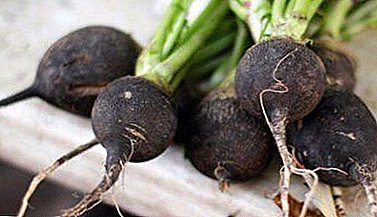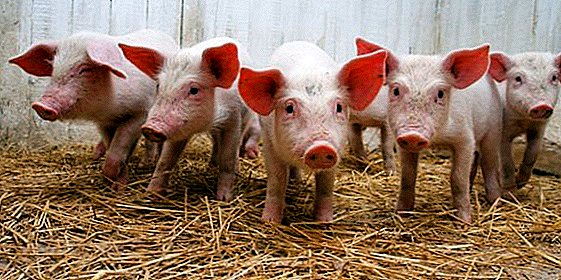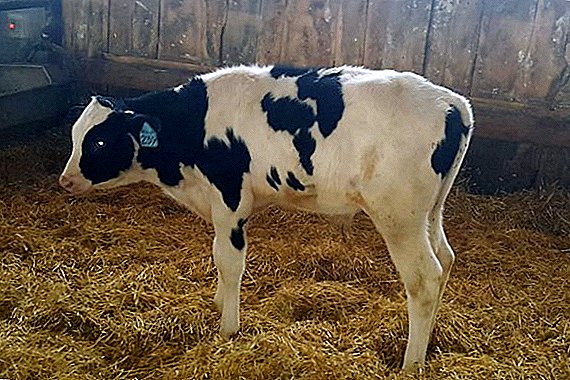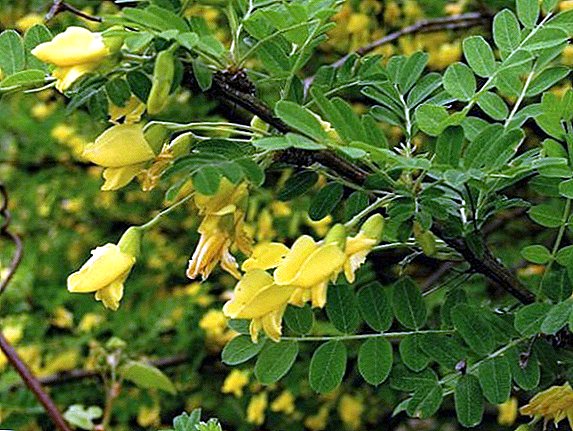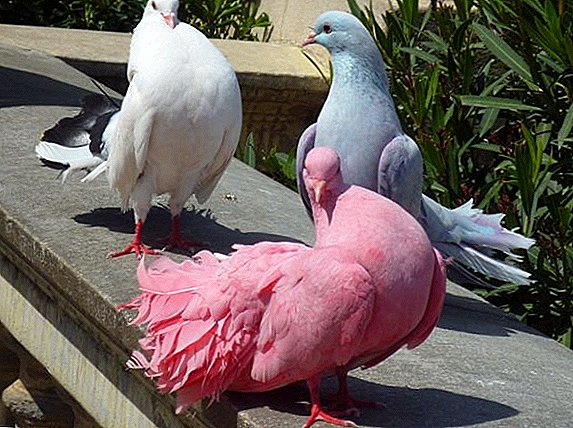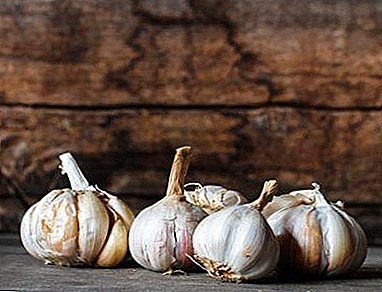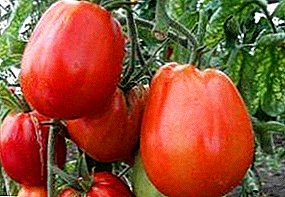 Freesia is loved by many for truly royal elegance. Its delicate aroma, vaguely reminiscent of lily of the valley, and a variety of colors of buds make it attractive for flower growers and gardeners.
Freesia is loved by many for truly royal elegance. Its delicate aroma, vaguely reminiscent of lily of the valley, and a variety of colors of buds make it attractive for flower growers and gardeners.
In addition, freesia flowers are long in the bouquet fresh.
Freesia: plant description
 Freesia - close cousin of the iris, belongs to the family of Iris (Kusatikovyh). Homeland flower - Africa.
Freesia - close cousin of the iris, belongs to the family of Iris (Kusatikovyh). Homeland flower - Africa.
The stems of freesia are graceful, branched, without edge, covered with brown scales. Leaf plates, depending on the species, are wide lanceolate and narrow in the shape of a sword.
Also in shape are different flower buds in different varieties. They can be in the form of a bell, a funnel and a deep bowl. Usually the buds are located on one side on curved stems.
Flowers can be terry, semi-double and simple. The variety of petals is amazing when freesias are in bloom: red and yellow (these types grow quickly), purple and blue, white and orange, pink and creamy cream.
The color of the flower's throat is different from the colors of the petals. Freesia blooms usually in the middle of winter. Freesia - fruiting flower. Its fruit is a basket of seeds.
This plant is bulbous, which makes it possible to choose the method of reproduction. Freesia at home is most often a hybrid species, it grows up to a meter in height.
The leaves of this plant are up to 20 cm in length, usually oblong, unilateral inflorescences, buds up to 5 cm in length.
Did you know? Freesia is valued not only as an ornamental plant: its delicate, delicate aroma is used in perfumery, in the manufacture of cosmetics (shampoos, soaps, lotions).
Optimal conditions for growing freesia

Freesia when growing in a pot requires increased attention.
To achieve its flowering, you need to create for it all the conditions and care.
Lighting
In order to provide the flower with the necessary lighting - 12 hours a day, you will have to purchase a fitolamp as an additional light. The best place for freesia will be the southern window-sill. When the sun is too active, the plant is best removed further from direct rays.
Air temperature and humidity
Immediately after planting, the temperature of +20 ° C will be optimal for the plant. After seven to ten days, it should be lowered to 10 ° C (if the landing was in the winter, the same 20 ° C remain in the spring).
The main thing in the temperature mode is to prevent temperature fluctuations below 2 ° C and above 20 ° C, otherwise the buds of the plant will become limp and deformed.
Soil requirements
For planting freesia, you can purchase a special substrate for bulbous plants. Or before you put the freesia in the pot, prepare the soil yourself.
For this you will need: peat, sand, turf ground (2: 0.5: 1), a generous pinch of bone meal and ash (this will give additional calcium).
How to put a freesia in the pot
Before planting a freesia, prepare a pot for the plant, be sure to lay drainage on the bottom (expanded clay, small river pebbles, foam plastic).
When is the landing
If you want to enjoy the flowering of freesia in the winter, plant the bulbs in September. In this case, the buds bloom in January-February.
Landing pattern
 The planting material of freesia, when planted in a pot, is presoaked in azotobacterin solution: 0.5 g per 10 l of water. Pick a pot with a diameter of about 20 cm.
The planting material of freesia, when planted in a pot, is presoaked in azotobacterin solution: 0.5 g per 10 l of water. Pick a pot with a diameter of about 20 cm.
Lay drainage and charcoal on the bottom, and then prepared, moistened substrate. Plant a few bulbs to a depth of 2-3 cm. After planting, determine the plant in a bright but cool room.
Important! Immediately after planting, watering the plants do not produce until shoots appear. As soon as the first leaves appear, the plant is moved to heat and watering begins.
How to care for a freesia at home
In freesia brittle stems, so the plant provides support so that the stems do not break under the weight of the buds when they bloom. The flowering period of the plant lasts about a month.
Interesting! In Europe, royal gardeners were engaged in freesia, the flower was expensive, and only the aristocratic strata of society could afford to purchase the southern beauty.
Peculiarities of watering before and flowering time
 For watering the flower using warm distilled water. Excessive watering can cause bulbs to rot, so water as the soil dries (twice a week).
For watering the flower using warm distilled water. Excessive watering can cause bulbs to rot, so water as the soil dries (twice a week).
In winter, under the influence of heating, the air in the room is dry - spray the plant from a sprayer, preferably in the evening.
Today, mini-fountains are used as decor; if you have one, it would be nice to put a freesia together. During the flowering period, watering is needed more often, then gradually reduce. When the freesia blooms, watering stops.
How to fertilize a freesia
Freesia fertilize complex mineral compounds twice a month. Use fertilizer for flowering plants. Immediately after the end of flowering, the plant still needs additional feeding: once in two weeks with a solution of superphosphate.
Features care after flowering
Freesia with bulbous planting requires care both before and after flowering. As soon as the inflorescences have withered, they are carefully removed, the leaves are cut and the stem is cut to the base.
 Only the onion remains in the pot, which is watered for one and a half months. Then carefully dig from the soil, washed from the ground.
Only the onion remains in the pot, which is watered for one and a half months. Then carefully dig from the soil, washed from the ground.
Before being stored, they are soaked in a weak solution of manganese and dried for several days.
Plant transplant
Having figured out how to plant a freesia at home, consider the conditions of transplantation. Home hybrid freesia transplanted annually in the spring.
So that the procedure was successful, the plant is kept for some time at a temperature not higher than 15 degrees. The microclimate, carefully created for the bulbs transplanted to a new place, will bring results in two or three weeks - the first shoots.
Freesia reproduction
Freesia does not cause much trouble during reproduction. You can multiply the plant and seeds, and corms. Seed method is used mainly for breeding new varieties.
 Seeds. To get the seeds from your plant, the freesia will have to be artificially pollinated. But regardless of whether you collected the seeds or bought them, they must be disinfected before sowing in a solution of manganese, soaked for a day.
Seeds. To get the seeds from your plant, the freesia will have to be artificially pollinated. But regardless of whether you collected the seeds or bought them, they must be disinfected before sowing in a solution of manganese, soaked for a day.
For sowing, prepare boxes for seedlings, soil (a mixture of sod and leaf earth). Sowing is carried out shallowly, in a moist substrate.
A little more than three weeks, the first shoots will appear. At home, young shoots covered with glass, creating a greenhouse; if possible, plant in the greenhouse.
Care is not difficult: regular watering, weeding, light and weekly dressing with potassium and phosphorus.
Klubnedetkami. Freesia when planting as a daughter of the bulbs also requires a preliminary preparation of planting material - this will greatly facilitate the care of her at home, and prevent plant diseases.
Dip the bulbs for half an hour in a weak solution of potassium permanganate. Drain. Prepare a pot (up to 15 cm in diameter) and light soil (a mixture of peat, sand and garden soil in equal proportions).
Deepen 6 cm when planting. Sprinkle with moistened soil, start watering after sprouting.
How to store freesia bulbs
 For the storage of bulbs is better to use nets or wooden boxes. Humidity regime up to 80%, room temperature from 22 to 26 ° C.
For the storage of bulbs is better to use nets or wooden boxes. Humidity regime up to 80%, room temperature from 22 to 26 ° C.
Once a month, inspect the material for disease or rot. Experienced flower growers recommend keeping bulbs in a box with dry peat. A month before planting, the bulbs are placed in cooler conditions around 15 ° C.
Attention! You can not store in the fridge hybrid freesia bulbs, they will die.
Not only rooms decorate with freesia: they plant a flower in the garden, put it on the balcony (inside and out). Freesia bouquets do not fade for a long time and adorn any festive event. Freesia in a pot can be an original gift.


